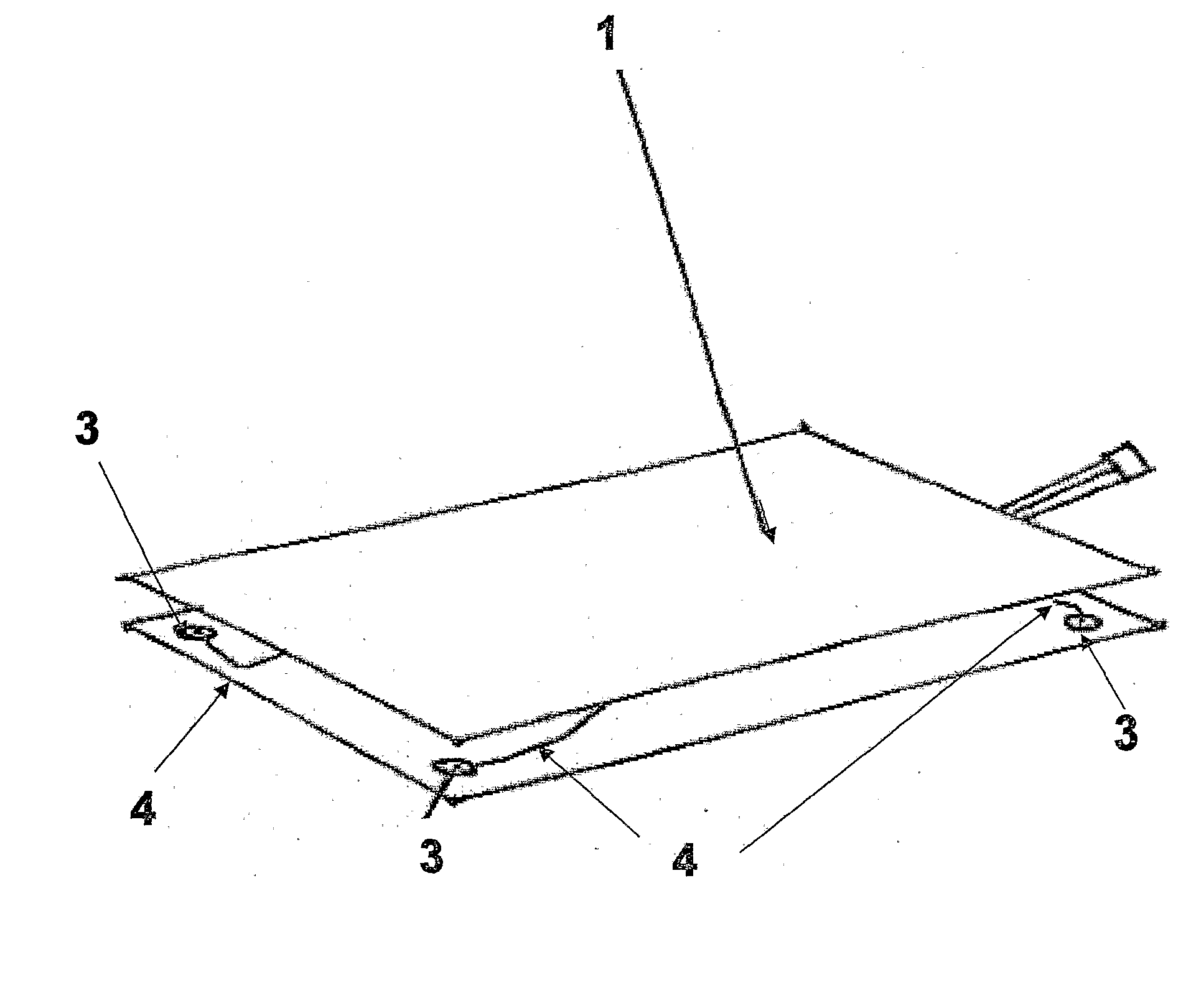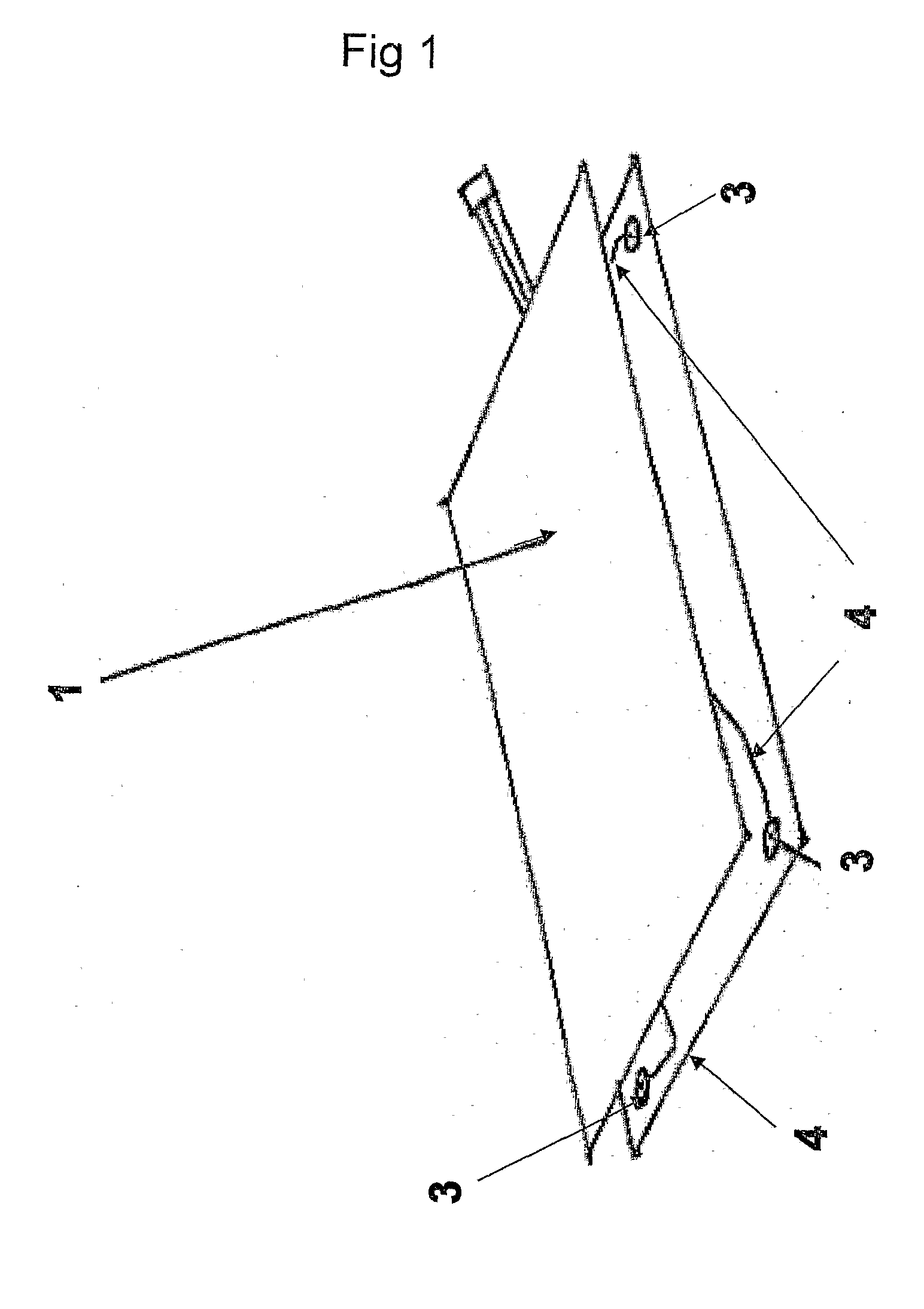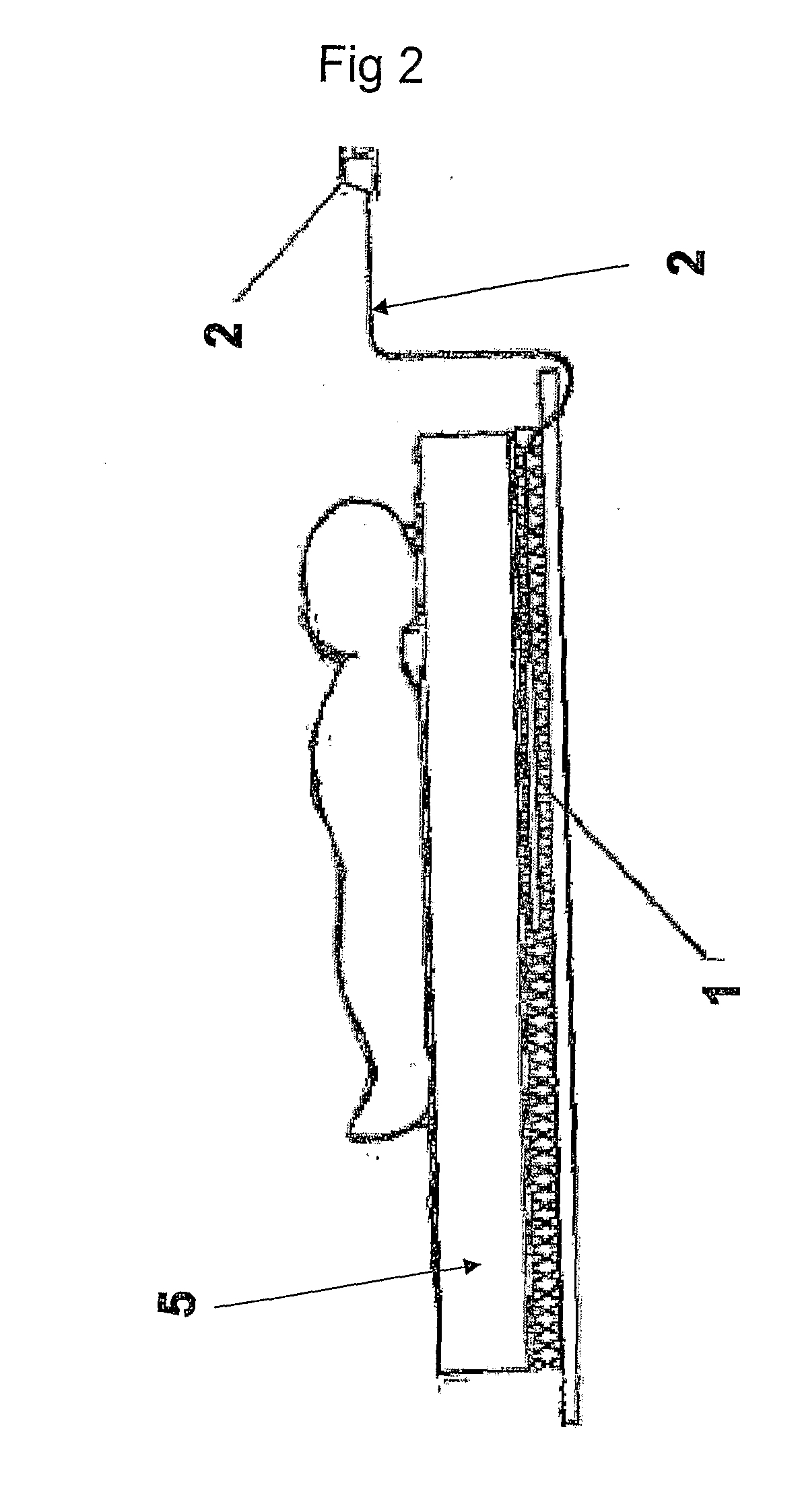Method for detecting heart beat and determining heart and respiration rate
a heart rate and respiration rate technology, applied in the field of vital sign detectors, can solve the problems of inability to detect and determine the heart rate, and the heart rate detection monitor is often invasive, and achieve the effect of preventing false alarms
- Summary
- Abstract
- Description
- Claims
- Application Information
AI Technical Summary
Benefits of technology
Problems solved by technology
Method used
Image
Examples
Embodiment Construction
[0027] Disclosed is an apparatus and system with a novel, non-invasive method for detecting the heartbeat and determining the heart rate of a patient within their sleep environment. The apparatus also detects the presence of respiration and is able to determine respiration rate.
[0028] Basic to the system of the present invention is an array of at least two pressure-sensitive sensors (3), located under the patient's body, which gather data from the patient, corresponding to the movements of the patient's body, including blood movement caused by circulation. The data from each sensor (3) is collected and undergoes the process of digitizing. Next, the difference between the results gathered from each sensor-group is filtered and analyzed. The analyzed difference determines the presence or absence of a heartbeat, as well as the actual heart and respiration rates. This system is suitable for both home and hospital monitoring, and can function as a cardio-respiratory monitor, analyzing t...
PUM
 Login to View More
Login to View More Abstract
Description
Claims
Application Information
 Login to View More
Login to View More - R&D
- Intellectual Property
- Life Sciences
- Materials
- Tech Scout
- Unparalleled Data Quality
- Higher Quality Content
- 60% Fewer Hallucinations
Browse by: Latest US Patents, China's latest patents, Technical Efficacy Thesaurus, Application Domain, Technology Topic, Popular Technical Reports.
© 2025 PatSnap. All rights reserved.Legal|Privacy policy|Modern Slavery Act Transparency Statement|Sitemap|About US| Contact US: help@patsnap.com



